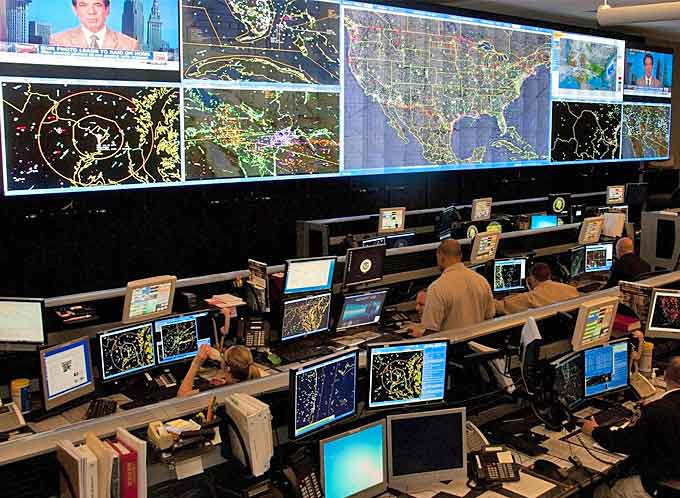
The ability to forecast criminal activity has been explored to various lengths in science fiction, but does it hold true in reality?
It could for U.S. Customs and Border Protection (CBP).
Currently, the DHS Science and Technology Directorate (S&T) is developing a Predictive Threat Model (PTM) to help CBP’s Air and Marine Operations Center (AMOC) more quickly and efficiently identify and stop nefarious aircraft.
“We can rethink how we do business with the monumental progress this brings to us,” said Tony Crowder, Executive Director at AMOC, looking forward to the impact predictive analytics could have on future operations.

“We owe this success to the teamwork of the Domain Awareness Federation and the collaboration within DHS S&T.”
The targets here are small, non-commercial flyers (commercial flight is already highly-regulated).
These aircraft could be classified as general aviation (GA) small aircraft, GA jets, ultralights, or even unmanned aircraft systems (UAS).
The skies are filled with increasing numbers of drones and unmanned aircraft with various intents, which can set the stage for potential terror threats, drug smuggling and other illegal activity.
CBP’s Detection Enforcement Officers (DEOs) work hard to detect such threats.
However, finding the needle in the haystack is an arduous, lengthy process that takes years to effectively master.
In the past, AMOC has been able to interdict criminal aircraft by tracking patterns of suspicious activity.
Criminals would respond by simply adapting their behavior—flying different routes, leaving from different ports, etc.
Machine learning, central to the PTM, would compress the time and effort it takes to respond to a suspicious craft, storing data continuously and allowing operators to more easily understand threat levels in a shorter amount of time.
(Learn More. A U.S. Customs and Border Protection Air and Marine Operations P-3 Orion aircrew patrols the Caribbean and Eastern Pacific to interdict contraband before it reaches the shores of the United States. Using sophisticated sensors and radar equipment, the aircrew covers thousands of miles of open ocean hunting for narcotics. In Fiscal Year 2016, P-3 aircrews contributed to 145 drug seizure or disruption incidents, resulting in the interdiction of 34,108 pounds of marijuana and 193,197 pounds of cocaine. Courtesy of U.S. Customs and Border Protection and YouTube)
DEOs identify aircraft using radar, determine where it is coming from, where it might be going, its altitude and other variables if known.
If the aircraft is deemed suspect, only then can DEOs start determining how to go about interdicting the aircraft through engagement and coordination with the local law enforcement.
This is changing today, with the evolution of machine learning, as S&T embarks on new applications for artificial intelligence (AI) and Big Data.
Using data from AMOC cases as far back as seven years ago or longer PTM uses AI to predict future threats.
Identifying certain behavior profiles of previously interdicted aircraft offers a surprisingly reliable measure for determining whether or not aircraft are a risk to national security.

S&T’s project lead Dr. Geoffrey Berlin believes the PTM’s ability to rapidly leverage data from numerous sources will enable significant improvement in the speed and accuracy of air domain surveillance and provide AMO with a clear picture of the security landscape in the air.
Only five or six pieces of information would allow users to know, with pretty good accuracy, what an aircraft’s intentions might be.
Information, including location, radio signal, flight destination, etc., can be combined to reveal the intentions of a criminal aircraft.
With more than 30 years of experience in conducting counterdrug operations, AMOC has developed the expertise necessary to understand the smuggling environment, and DEOs have the skills to detect nefarious activity.
The PTM will provide AMOC with tools necessary to more quickly sort through the thousands general aviation aircraft to detect and report a potential threat to the responding law enforcement before criminals have a chance to adjust their activity.
A PTM that incorporates larger data sets with past and continuously current data allows the model and the AMOC to quickly classify any flight, even when limited information is available, and determine a suspect flight profile and the risk it poses to national air domain security.
Future developments will enable predicting potential landing and interdiction locations.
The basis for this kind of threat prediction is called Bayesian Inference, a logical process centered on the simple notion that greater amounts of past data allow for a more accurate projection of future outcomes.
(Learn More. A walk through a couple of Bayesian inference examples. Courtesy of Brandon Rohrer and YouTube)
With AMOC’s large quantities of historical suspect behavioral information, analysts and operators can divide behavior into profiles and determine what constitutes a threat and what does not.
The goal of the program is to use the predictive model to provide greater overall situational awareness and a more immediate, informed response by operators when they are called upon.
This current PTM has shown great potential and has accurately predicted suspect behaviors in testing at the AMOC.
It is now headed out of the initial prototype phase and is in a six-to-nine month operational period.
The model will undergo further enhancements and development in the AMOC operational environment where operators will have a chance to test it.
















